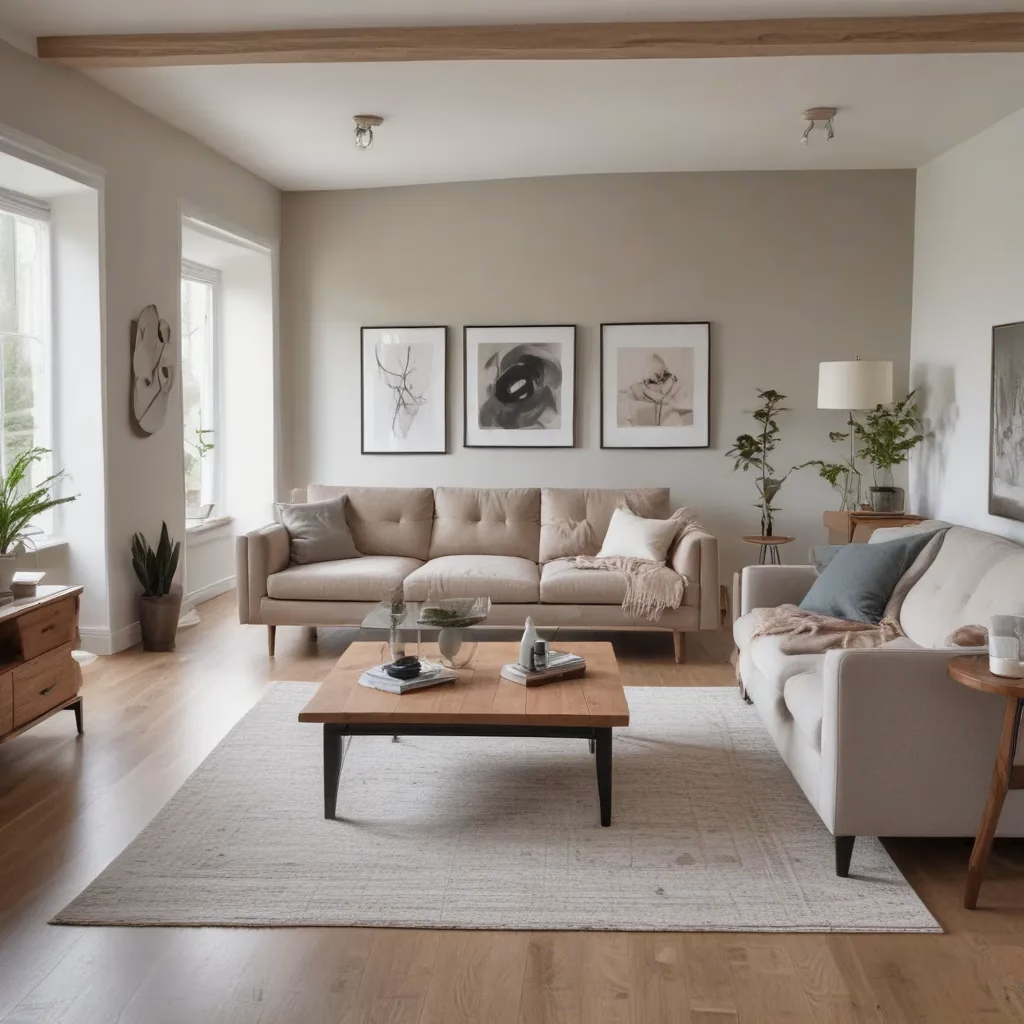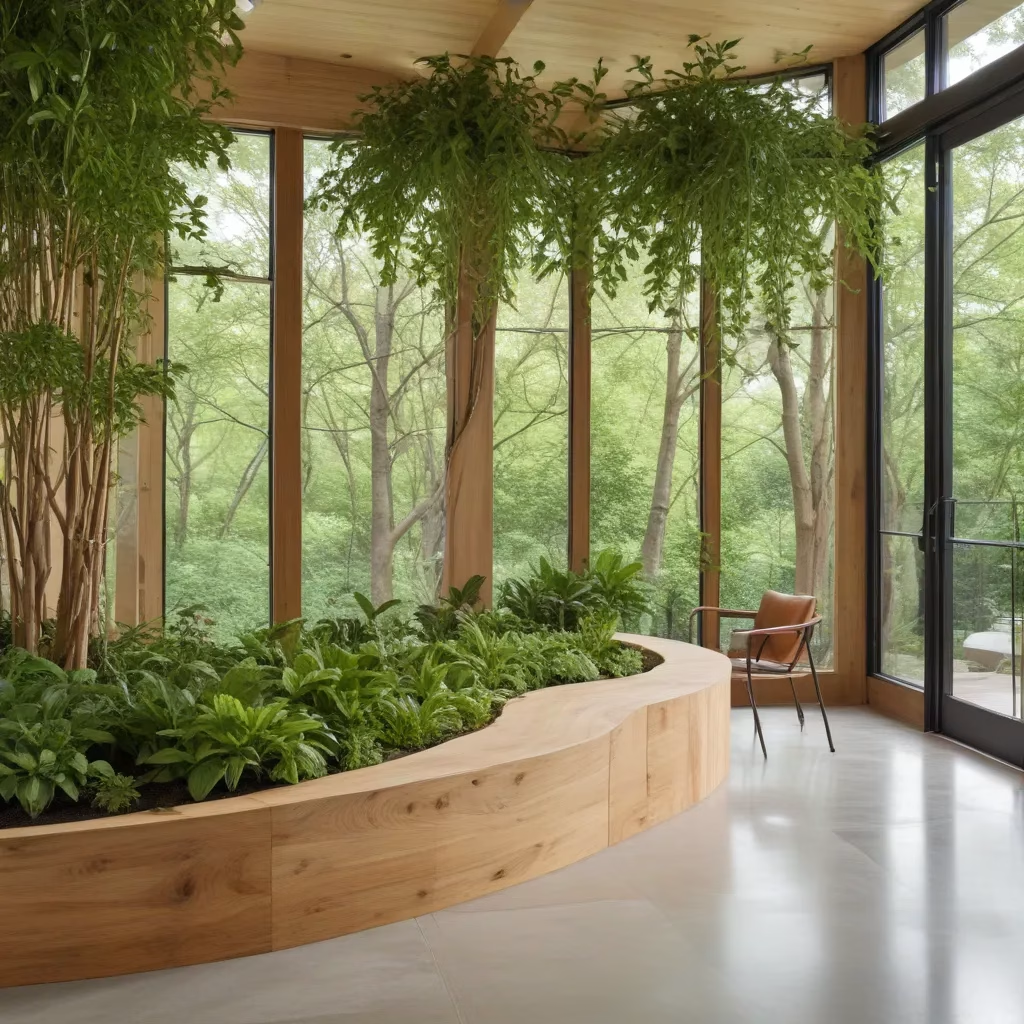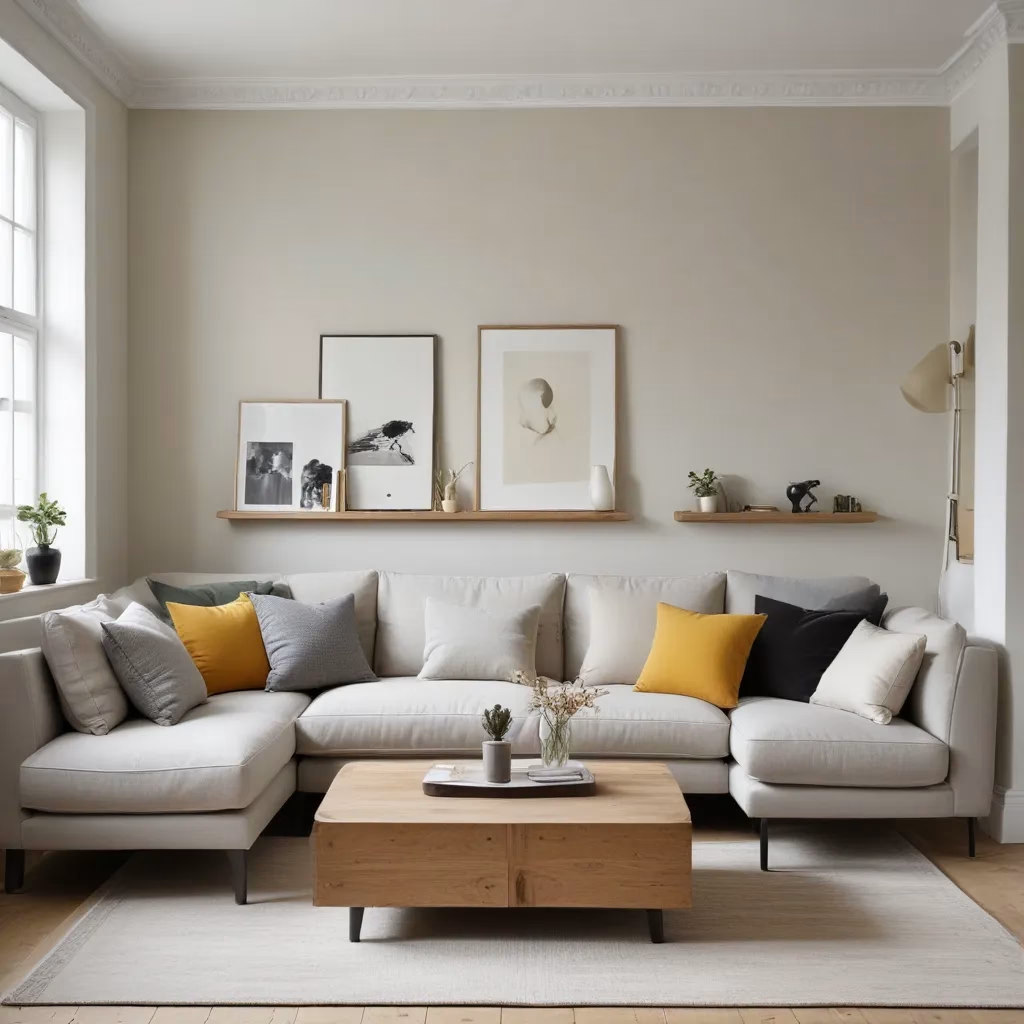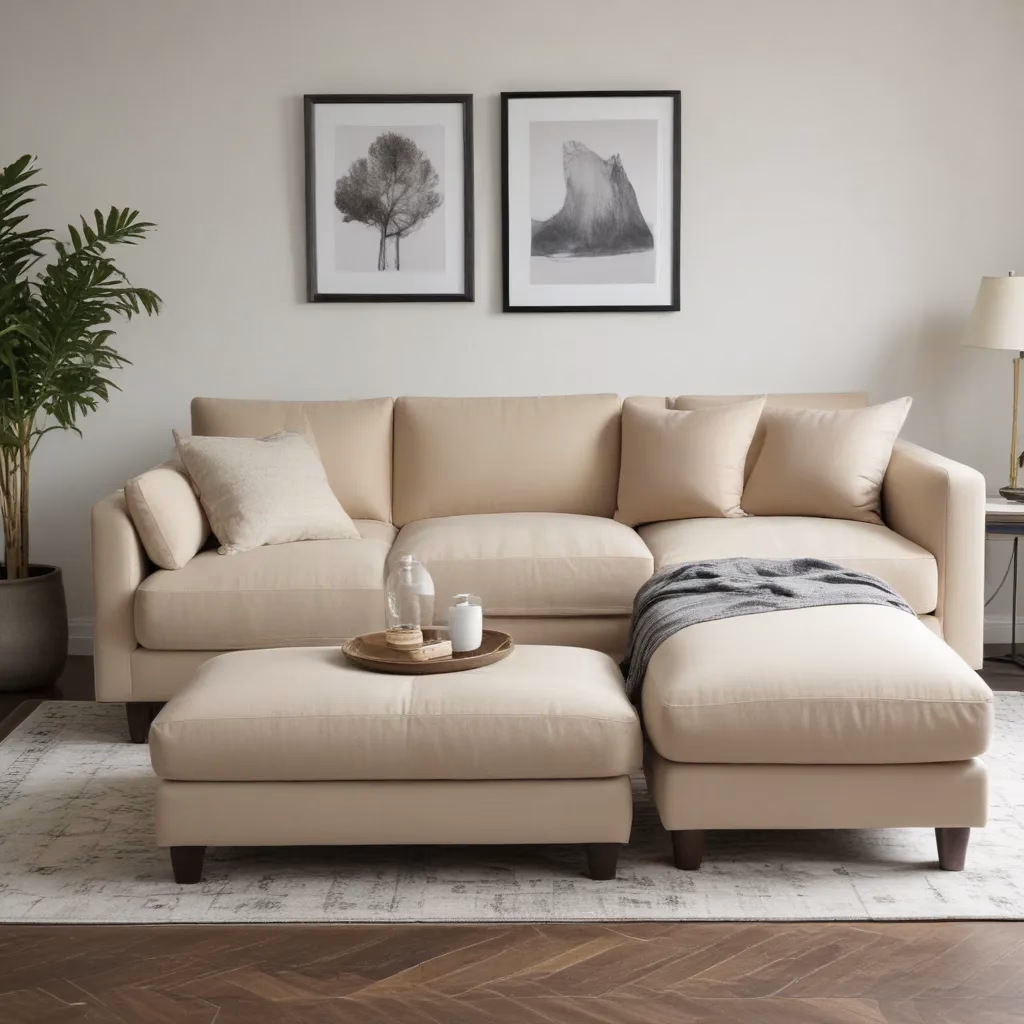
Arranging Furniture for Optimal Flow and Function
Creating a comfortable, cohesive, and functional living space requires thoughtful furniture arrangement. Whether you’re setting up a new home or refreshing an existing room, having the right layout can make all the difference in how you and your guests experience the space. As an experienced furniture consultant, I’m here to share proven strategies for arranging your sofas, chairs, and accent pieces for the best possible flow and functionality.
Choosing the Right Sofa
The sofa is often the central focus and anchoring piece of a living room. When selecting a new sofa, there are several key factors to consider beyond just aesthetics. Think about the size and scale in relation to your room ̶ you want a sofa that fills the space well without overwhelming it. Pay attention to the sofa’s depth, as deeper seats (around 40 inches) offer more lounging comfort, while shallower options (around 36 inches) can help a smaller room feel more open.
The sofa’s shape is also important for flow. Rectangular or square silhouettes tend to create a more formal, structured vibe, while curved or L-shaped sectionals can promote a more relaxed, conversational atmosphere. Modular sofas with movable chaise or armrest components provide the most flexibility to adapt the layout as needed.
Don’t forget about upholstery fabric. Durable, family-friendly fabrics like performance velvets, woven textiles, or leather can stand up to daily use, while delicate options like silk may require more careful maintenance. I generally recommend sticking to solid, neutral tones for the sofa itself, then using accent pillows and throws to incorporate pops of color or pattern.
Sofa Placement Strategies
Once you’ve chosen the perfect sofa, it’s time to consider where to position it. The key is to create a balanced flow through the room without obstructing major pathways.
Start by identifying the room’s focal point – this could be a fireplace, large window, or architectural feature. Arrange the sofa to face this point, either parallel or angled slightly. This helps define the main seating area and draws the eye.
Then, give the sofa ample breathing room on all sides. You’ll want at least 2-3 feet between the sofa and any nearby walls or furniture. This prevents the space from feeling cramped and cluttered. If the room is large enough, try floating the sofa in the middle of the space rather than pushing it against the wall.
When it comes to placement relative to other pieces, aim to balance heavier, bulkier furniture like the sofa with more delicate accent chairs or side tables. A common rule of thumb is to place a pair of matching chairs across from the sofa to create a cozy conversational nook. But feel free to experiment ̶ an asymmetrical layout with varied furniture scales can also work beautifully.
Living Room Layout Considerations
Beyond the sofa, thoughtful furniture arrangement is key for optimizing flow and function throughout the living room. Start by mapping out the room’s traffic patterns. Avoid placing large pieces in the main walkways; instead, create defined pathways that guide people smoothly around seating areas.
When arranging seating, focus on crafting conversational groupings. Position chairs, loveseats, or ottomans to face each other, with a coffee table or side table in the center. This encourages interaction and makes the space feel more intimate. Don’t be afraid to experiment with angled furniture to make the most of the room’s square footage.
Balancing functionality and aesthetics is also crucial. double-check that there’s ample surface area for displaying decor, setting down drinks, and keeping everyday essentials within reach. But avoid overcrowding the room ̶ leave breathing room for easy movement. Layering area rugs can help ground and define separate zones.
Finally, consider how the living room connects to adjacent spaces. An open floor plan requires extra thoughtfulness to maintain flow, whether that’s through strategic furniture placement or transitional elements like console tables or accent pieces.
Upholstery Care and Maintenance
Proper care is essential for keeping your sofas and upholstered furniture looking their best for years to come. Start with regular vacuuming to remove dirt and debris, using the upholstery attachment to get into crevices. For deeper cleaning, refer to the manufacturer’s instructions ̶ many sofas have removable cushion covers that can be machine-washed.
Tackle spills and stains promptly, blotting with a clean, damp cloth. Avoid rubbing, which can work the stain deeper into the fabric. If needed, use a mild detergent or upholstery cleaner, testing first in an inconspicuous area. For more stubborn stains, consider bringing in a professional cleaning service.
To protect your upholstery investment, use fabric protectors and rotate or flip cushions regularly. Store unused pillows and throws to minimize sun exposure, which can cause fading over time. With a bit of attentive care, your sofas and chairs can maintain their beauty and comfort for many years.
Styling for Comfort and Aesthetics
Once the foundational furniture is in place, it’s time to layer in the finishing touches that transform a room from functional to fashionable. Start by mixing textures and patterns for visual interest. Pair the smooth, tailored lines of a sofa with plush accent pillows, nubby throws, and shiny metallic accents.
Don’t be afraid to scale up when it comes to accessories. Oversized floor lamps, chunky coffee table books, and statement area rugs can make a space feel more intentional and polished. Sticking to a cohesive color palette will help tie everything together.
Ultimately, the goal is to create a living room that’s both comfortable and visually appealing. Arrange furniture to encourage relaxation and conversation, then style with an eye toward creating a cohesive, magazine-worthy look. With a little creativity and attention to detail, you can craft a living space that perfectly suits your lifestyle.
Furniture Buying Guides
When sourcing new sofas, chairs, and accent pieces, precise measurements are key. Always measure the room’s dimensions and entryways to double-check that a flawless fit. Leave at least 2-3 feet of clearance around seating to maintain flow, and double-check that pathways are wide enough for easy navigation.
Beyond size, consider the construction quality of any furniture you’re eyeing. Look for hardwood frames, reinforced joints, and high-density foam cushions that will hold up to daily use. Coil count and suspension systems also contribute to long-term comfort and support.
For budget-conscious shoppers, secondhand and direct-to-consumer furniture brands can be great options. Just be sure to thoroughly inspect any pre-owned pieces and test out the comfort level before making a purchase. With a little research and strategic planning, you can find high-quality, stylish furniture that fits your space and your wallet.
No matter your design aesthetic or lifestyle needs, thoughtful furniture arrangement is essential for creating a living room that looks and feels amazing. By following these expert tips, you can craft a comfortable, functional, and visually captivating space that will delight you and your guests for years to come. Happy decorating!
Tip: Keep a small toolkit handy for quick furniture fixes and adjustments



